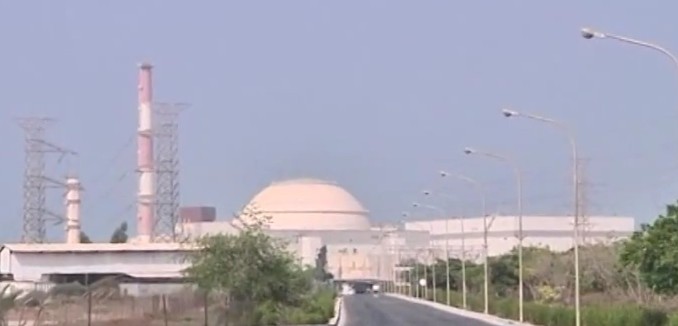The latest International Atomic Energy Agency (IAEA) report on Iran’s nuclear program raises concerns about the U.N. watchdog’s ability to verify Tehran’s compliance with the nuclear deal, according to an analysis (.pdf) published by the Institute for Science and International Security on Wednesday.
The institute reviewed the process by which the IAEA investigated suspicions of illicit nuclear research at the Parchin military complex, and concluded that it “raises troubling precedents for […] the verifiability of the long term nuclear deal.”
In mid-September, the IAEA remotely supervised sample taking by Iran at a particular building at the Parchin military site where Iran is alleged to have conducted high explosives tests relating to nuclear weapons. The IAEA was not physically present at the sample taking but directed the locations from which Iran took the samples in the building and viewed the process via video recording. It is unclear whether the videotaping was done in real-time, such as with a live feed to IAEA inspectors located elsewhere, or was accomplished by the Iranians and the digital files then given to the inspectors for analysis and review.
On September 20, Director General Amano and the Deputy Director General for Safeguards Tero Varjoranta visited the building of interest at the Parchin military site. Director General Amano had earlier announced and the report states again that the two IAEA officials saw “indications of recent renovation” and “there was no equipment in the building.” The IAEA states that the environmental samples taken at the site in the days prior and the “visual observations” made by the two officials are being assessed.
ISIS continues to assess that the manner in which environmental samples were taken at Parchin raises troubling precedents for both the IAEA’s investigation into Iran’s past work on nuclear weapons and the verifiability of the long term nuclear deal. This is due in large part to the sanitization efforts that ISIS, the IAEA, and U.S. and other governments have observed Iran conducting at the Parchin site since the IAEA’s first request for access in February 2012 (see Figure 13). ISIS remains concerned that non-physically present IAEA inspectors would not have been able to adequately determine where Iran may have carried out concealment or renovation activities at Parchin and adequately direct sample taking in those areas. The physical presence of trained, experienced inspectors, with the ability to investigate the building or site up-close, is critical to detecting the best places to sample, particularly in the case of a country that has a history of violating its safeguards obligations.
Olli Heinonen, a former deputy director general of the IAEA, warned in August that the arrangement between the nuclear watchdog and Iran regarding sample taking at Parchin deviated “significantly from well-established and proven safeguards practices.” In a recent report (.pdf) prepared for the Foundation for Defense of Democracies, Heinonen reiterated, “The IAEA-Iran agreement regarding Parchin has deviated significantly from well-established safeguards practices, which involve the full physical presence of inspectors on location, the integrity of the samples they take themselves, and the ability of the IAEA to draw definitive conclusions with the requisite level of assurances.”
Iran is suspected of having tested detonators for nuclear bombs at Parchin. Understanding the extent of Iran’s research at the site and addressing its possible military dimensions (PMD) is essential to establishing the full scope of Tehran’s nuclear program and verifying its compliance with the nuclear deal.
“PMD-related transparency is seen as not just another issue – say, one that Iran could refuse to trade away by making concessions in other areas – but as a prerequisite to verifying Iranian compliance across all issues,” wrote Omri Ceren, The Israel Project’s managing director for press and strategy, while explaining the necessity of verifying the extent of Iran’s past nuclear work. The Israel Project publishes The Tower.
The IAEA report also revealed that Iran has increased its stockpile of low-enriched uranium. According to Reuters, “Iran’s stockpile of low-enriched uranium had increased by 460.2 kg in the past three months to 8,305.6 kg, the report said. Under the deal with major powers, that stockpile must be slashed to no more than 300 kg.” An unnamed diplomat claimed that this was “a normal fluctuation.”
In an op-ed written for The Tower in September, non-proliferation expert Emily Landau explained that the international community’s ability to ensure Iran’s compliance with the nuclear agreement will be significantly constrained, partially due to flaws in its verification regime.
A reasonable assessment of the deal must also incorporate insights into how Iran has been “playing the game” with international negotiators for over a decade, including the experience it gained in exploiting ambiguities and loopholes in the Nuclear Nonproliferation Treaty (NPT) and abusing previous commitments that it made with the international community. An understanding of this history should have raised many red flags with regard to problematic aspects of the deal.
Any attempt to assess the long-term viability of the deal must be carried out with an eye to the political realities that will very likely constrain both the ability and the will of the P5+1 nations to act effectively and in a timely manner to ensure that Iran upholds its end of the deal. Statements issued by the U.S. administration, promising that any violation will be detected and taken care of “in time,” cannot simply be accepted at face value. This is anything but a foregone conclusion, due to problems with the verification regime itself—especially regarding the ability to effectively inspect suspicious military facilities—but also because of the lack of a clear path for confronting Iranian violations, coupled with an Iranian threat (embedded in the deal itself) to leave the deal in part or in whole if sanctions are reimposed.
[Photo: JewishNewsOne / YouTube ]




